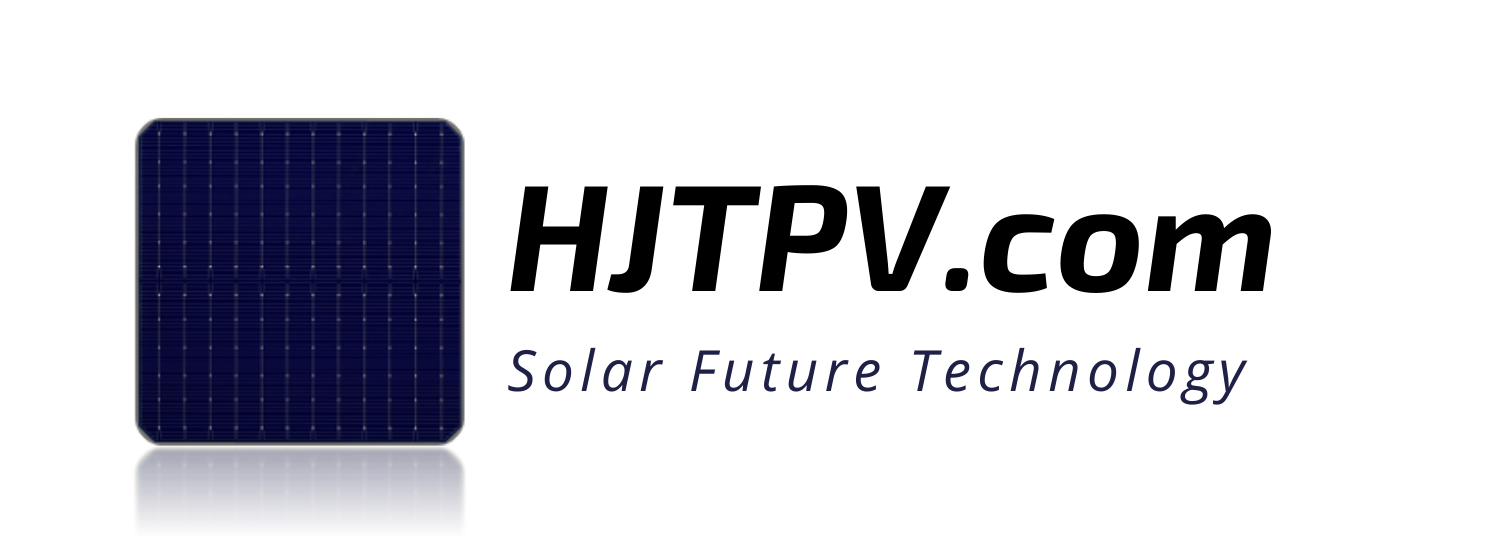Innovate solar farm with 700W HJT modules
Since G12 (210mm) solar cell standards become popular, 700W and more are natural choices for big projects.
High-power heterojunction modules force big inverters development. The answer for big solar panels is 250kW and 350kW inverters.
Big modules with dimensions 2384x1303x35mm force as well as new solar construction development. Solar Construction manufacturers must follow new standards and develop bifacial-friendly designs for modules up to 720W.
Based on this most modern configuration, the first 1MW solar farm in the north of Poland had been made.
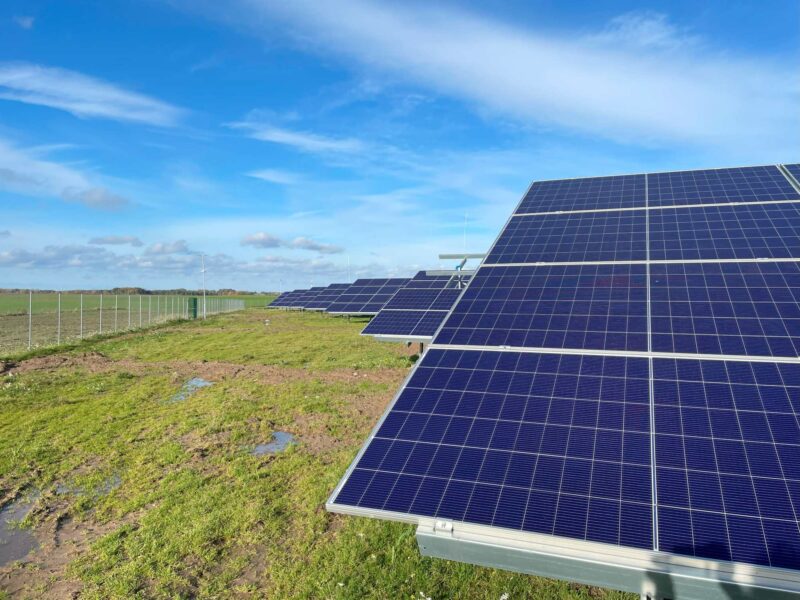
1Mega Watt HJT Solar Farm Configuration
Solar Panels HJT (heterojunction) 700W. Bifacial and solar cells standard G12 210mm. Mysolar manufacturer gives a 30-year warranty for the product and linear power yield.
350kW solar inverter dedicated for high ampere solar panels as 700W bifacial modules. Configuration with MPPT trackers and strings gives flexibility for designing tables at a solar farm.
4 raw with table with 16 high power 700W HJT modules is one of the most optimum configurations for solar farms. Construction dedicated to bifacial modules with limited shading elements. Magnelis coating gives strength and long-term protection for installation.

Video from 1MW HJT 700W solar panels project
Why Heterojunction 700W modules are best for utility projects?
The abilities of HJT technology give additional value to the efficiency background.
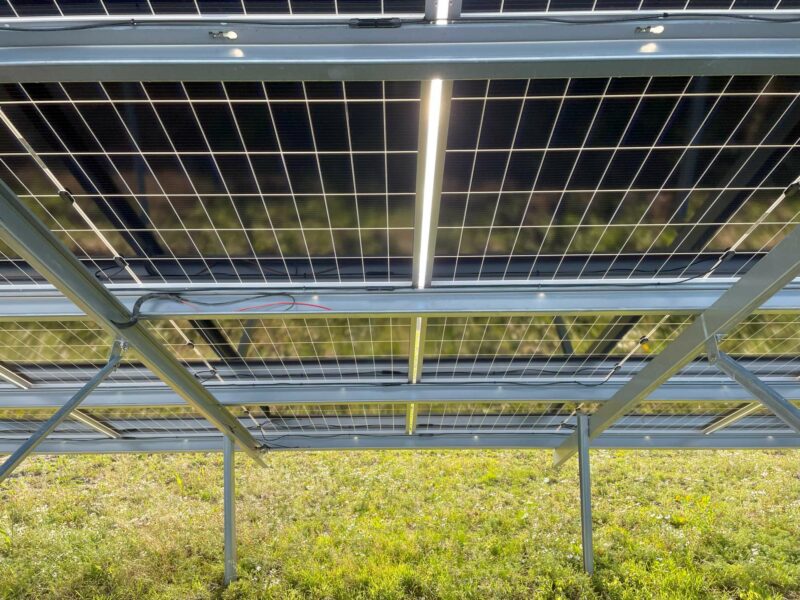
Why HJT modules are a reasonable choice for solar farms?
Heterojunction (HJT) is a solar cell technology that has several advantages that make it a good choice for solar farms.
Higher efficiency: HJT cells can achieve higher conversion efficiencies than traditional silicon cells, meaning they can convert more sunlight into electricity. This can lead to a larger amount of power generated from each panel, which can help to reduce the cost of a solar farm project. The most powerful HJT serial produced module 720W has 23,17% efficiency.
Improved temperature performance: HJT cells are less sensitive to temperature changes than traditional silicon cells, which means they can continue to generate electricity at a high efficiency even in hot weather. This can be a major advantage in regions with hot climates, where traditional silicon cells can lose efficiency as temperatures rise. Temperature coefficient 0,24%-0,26% compared to 0,3% in TopCon and 0,35-0,4% in PERC give a visible difference in power production.
Greater durability: HJT cells are also more durable than traditional silicon cells, which can help to extend the lifespan of a solar farm. They are less likely to be damaged by harsh weather conditions or environmental pollutants.
Reduced manufacturing costs: HJT cells are manufactured using a more efficient process than traditional silicon cells, which can help to reduce the cost of production. This can make HJT cells a more cost-effective option for solar farms, especially as the technology continues to mature and production costs fall. Due to the fewer production steps compared to PERC and TopCon and the low temperature needed to produce HJT carbon footprint in the case of HJT modules is lower.
Overall, HJT is a promising solar cell technology that has the potential to revolutionize the solar industry. Its higher efficiency, improved temperature performance, greater durability, and reduced manufacturing costs make it a good choice for solar farms.
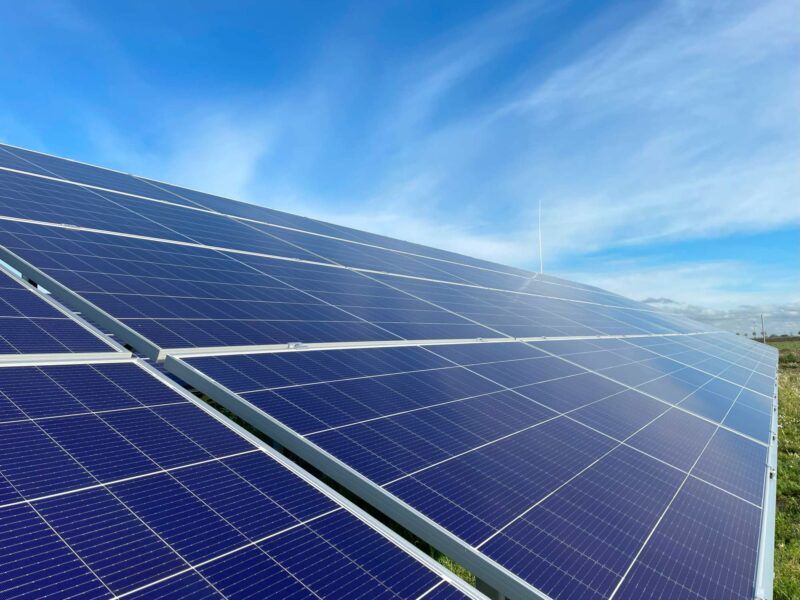
Special abilities in heterojunction technology for utility projects.
HJT cells an modules are particularly well-suited for bifacial modules due to their lower internal resistance and improved light-trapping capabilities. This allows bifacial HJT modules to generate more electricity from both the front and back of the panel, further enhancing their overall output (up to 95% light from albedo reflection).
Here are some specific benefits of HJT technology in bifacial modules:
Enhanced Power Output: Bifacial HJT modules can achieve higher power outputs compared to traditional bifacial modules due to the higher efficiency of HJT cells. This can lead to significant increases in energy production for solar farms. Most powerful 720W power solar panels.
Improved Light Trapping: HJT cells have an advanced surface texture that helps to trap more sunlight, resulting in better light absorption and increased power generation.
Lower Internal Resistance: HJT cells have a lower internal resistance, which allows them to dissipate heat more effectively and maintain their efficiency under high-power conditions. This is particularly important for bifacial modules, which are exposed to more heat due to their dual-sided light collection.
As a result of these advantages, bifacial HJT modules are becoming increasingly popular for solar farms seeking to maximize their energy production and optimize their return on investment.
Here’s a table summarizing the key benefits of HJT technology for bifacial modules:
| Feature | Traditional Bifacial Modules | Bifacial HJT Modules |
|---|---|---|
| Power Output | Lower | Higher |
| Light Trapping | Less Effective | More Effective |
| Internal Resistance | Higher | Lower |
| Heat Dissipation | Less Efficient | More Efficient |
| Overall Energy Production | Lower | Higher |
Overall, HJT technology is a promising advancement in solar cell technology that can offer significant benefits for bifacial modules, particularly in terms of power output, light trapping, internal resistance, and heat dissipation. These improvements can lead to increased energy production, improved system reliability, and extended lifespan for solar farms.
Why HJT prevent LID and PID influence?
HJT technology is inherently less susceptible to PID and LID than traditional silicon solar cells. This is due to the unique structure of HJT cells, which have a thin amorphous silicon layer sandwiched between a high-quality crystalline silicon wafer and a passivating layer. This structure helps to prevent the formation of electrical fields that can cause PID, and it also reduces the amount of light-induced damage that can lead to LID.
Preventing PID:
PID occurs when electrical fields induced by other components in the solar panel’s electrical system cause the degradation of the front contact of the solar cell. HJT cells are less susceptible to PID because the thin amorphous silicon layer acts as a barrier to these electrical fields, preventing them from reaching the front contact.
Reducing LID:
LID is a temporary decrease in the efficiency of solar cells that occurs when they are exposed to high-intensity light. HJT cells are less susceptible to LID because the passivating layer helps to protect the solar cells from these harmful light rays.
As a result of its resistance to PID and LID, HJT technology can help to ensure the long-term performance and reliability of solar panels, particularly in harsh environments or when operating in an interconnected solar farm. This can lead to increased energy production and a lower overall cost of ownership for solar farms.
Here’s a table summarizing the key benefits of HJT technology in terms of PID and LID mitigation:
| Feature | Traditional Silicon Cells | HJT Cells |
|---|---|---|
| Susceptibility to PID | High | Low |
| Susceptibility to LID | High | Low |
| Long-term Performance | Shorter | Longer |
| Reliability | Lower | Higher |
Overall, HJT technology’s resistance to PID and LID can significantly contribute to the long-term performance and reliability of solar farms, making it a more attractive option for investors and project developers.

The amorphous silicon layer in HJT cells plays a crucial role in enhancing their power output and overall efficiency. Here’s how it contributes to increased power production:
Surface Passivation: The amorphous silicon layer serves as a highly resistive layer that effectively passivates the silicon surface, preventing the formation of surface defects and recombination centers. These defects can trap electrons and holes, reducing the solar cell’s ability to generate electricity. By passivating the surface, the amorphous silicon layer allows more light to be absorbed and converted into electricity.
Light Trapping: The amorphous silicon layer acts as a waveguide, trapping light within the cell and enhancing light absorption. This is achieved through the creation of a graded index of refraction, which guides light rays through the cell and maximizes their interaction with the silicon material. This improved light trapping capability leads to a higher conversion efficiency and more power generation.
Reduced Shock Degradation: The amorphous silicon layer protects the silicon wafer from mechanical stress and shock-induced degradation. This is particularly important for bifacial modules, which are more prone to stress due to their dual-sided light collection. By minimizing shock damage, the amorphous silicon layer ensures the long-term stability and performance of the solar cell.
Enhanced Stability: The amorphous silicon layer exhibits excellent thermal stability, maintaining its properties even under harsh environmental conditions. This stability is crucial for long-term performance as solar cells operate under varying temperatures and climatic conditions.
Improved Lifetime: By mitigating surface defects, reducing shock damage, and maintaining stability, the amorphous silicon layer contributes to the overall lifetime of the HJT cell. This extended lifetime translates to more years of power generation and a lower cost of ownership for solar farms.
In summary, the amorphous silicon layer in HJT cells plays a vital role in enhancing power output, improving surface passivation, facilitating light trapping, reducing shock degradation, enhancing stability, and extending lifetime. These advantages make HJT technology a promising and efficient solution for solar farms, contributing to increased energy production, improved system reliability, and extended lifespan.
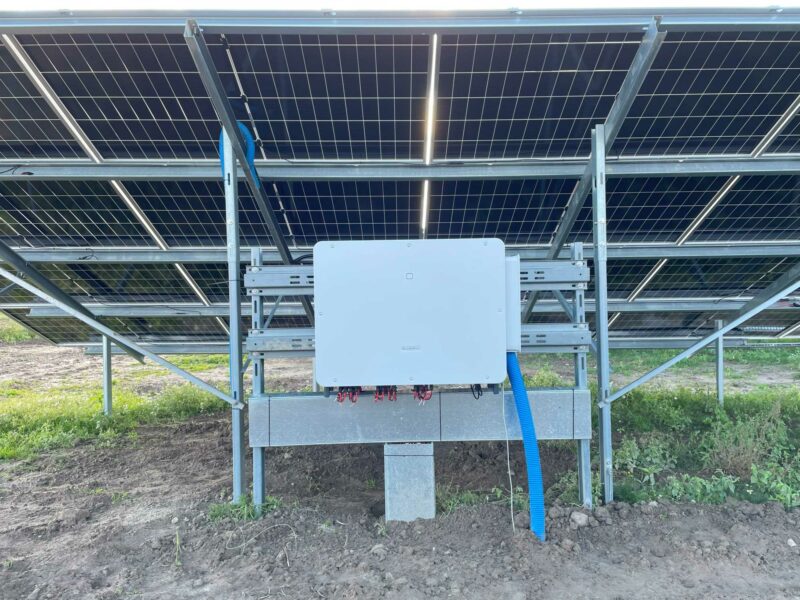
Why string inverter 350KW is the best choice for solar farms?
A photovoltaic (PV) inverter with a power rating of 350kW is a large-scale, high-power inverter designed to convert DC power generated by a solar panel array into usable AC power fed into the electrical grid.
350kW solar string inverters are the best choice for high-power modules. The most important abilities for every 350kw inverter are at least 40Amperes for the MPPT tracker, so 20Amperes for each string. This is crucial for Module ampere above 15A, especially bifacial HJT.
These types of inverters are commonly used in solar farms or utility-scale solar power plants where large amounts of power need to be converted and delivered to the grid. They typically have multiple MPPTs (maximum power point trackers) to ensure optimal energy harvest from the solar panels and are equipped with advanced features such as reactive power control, anti-islanding protection, and remote monitoring and control capabilities. Kehua SPI350K-B-H and SungrowSG350HX have 12 MPPT trackers to achieve maximum flexibility and power efficiency, even with the most powerful modules.

High power inverters 350kw and high power modules 700W
High-power inverters with a power rating of 350 kW and high-power modules with a power rating of 700 W are important components in large-scale solar power systems. The main advantage of using big inverters and modules is that they can help to increase the overall power output and energy yield of the system while reducing the overall system cost.
Here are some specific advantages of using high-power inverters and modules in solar power systems:
Improved efficiency: High-power inverters and modules typically have higher efficiency than lower-power ones, which means they can convert a larger percentage of the DC power generated by the solar panels into usable AC power that can be fed into the grid. This can help to maximize the energy harvest from the solar panels and increase the overall energy yield of the system.
Modules freedom: A big inverter like a 350k is ready to connect high-power modules eg.700W most efficiently. 40A on each MPPT = 20A on each string which is enough, to optimize the production of bifacial double glass modules 700W.
Reduced costs: Using high-power inverters and modules can help to reduce the overall system cost of a solar power plant, as it can eliminate the need for multiple smaller inverters and modules, as well as associated wiring, installation, and maintenance costs.
Better performance: High-power modules can be designed with advanced technologies such as PERC (Passivated Emitter Rear Contact) and bifaciality, which can help to improve the energy production and overall performance of the solar power plant. Similarly, big inverters can be designed with advanced features such as multiple MPPTs and advanced grid management capabilities, which can help optimize energy production and improve the overall performance and reliability of the system. Usually has 12 MPPTs and 24 string slots, which creates new better solar farm design standards.
Scalability: Using high-power inverters and modules can allow for easier scalability of the solar power plant, as additional solar panels can be added to the system without the need for additional inverters or major system upgrades. This can help to simplify system design and reduce installation costs. M12 standard in most powerful modules protects investors from a problem with replacement modules in the future. The biggest cell will be standard for many years and at the same time will be easy to find to replace broker modules in solar farms.
Remote monitoring and control: Many high-power inverters come equipped with remote monitoring and control capabilities, allowing for real-time performance monitoring, fault detection, and system optimization. This can help to improve system uptime and reduce maintenance costs.

Comparison of most commonly used inverters at solar farms.
The choice of inverter size depends on several factors, including the size of the solar array, the type of solar panels, and the desired level of efficiency. Here is a comparison of 350kW, 250kW, and 125kW inverters:
Power Handling Capacity
- 350kW inverters can handle the most power, making them suitable for large solar modules.
- 250kW inverters are a good option for medium-sized solar arrays.
- 125kW inverters are suitable for smaller solar arrays.
DC-to-AC Conversion Efficiency
- Inverter efficiency is the percentage of DC power from the solar panels that is converted into AC power that can be used by homes and businesses.
- 350kW inverters typically have the highest efficiency, followed by 250kW inverters and then 125kW inverters.
Cabling Costs
- The length of cables needed to connect the solar panels to the inverter depends on the size of the cells.
- Shorter cables are more efficient and less expensive.
- 350kW inverters can handle more power at a shorter distance, which can reduce cable costs.
Overall Efficiency
- Overall efficiency is the combination of power handling capacity and DC-to-AC conversion efficiency.
- 350kW inverters are generally the most efficient, followed by 250kW inverters and then 125kW inverters.
Future-Proofing
- Larger inverters are more future-proofed because they can handle larger and more powerful solar panels in the future.
- 350kW inverters are the most future-proofed option.
Cost
- Larger inverters typically cost more than smaller inverters analyze one unit. But the total cost of 350kw inverters for the whole project is lower.
- The cost of an inverter also depends on the brand and features.
Here is a table summarizing the key comparison points:
| Feature | 350kW Inverters | 250kW Inverters | 125kW Inverters |
|---|---|---|---|
| Power Handling Capacity | High | Medium | Low |
| DC-to-AC Conversion Efficiency | Highest | Medium | Lowest |
| Cabling Costs | Low | Medium | High |
| Overall Efficiency | Highest | Medium | Lowest |
| Future-Proofing | Yes | Yes | Limited |
| Total Cost | Lowest | Medium | Highest |
In general, 350kW inverters are the best choice for large solar modules, 250kW inverters are a good option for medium-sized PV, and 125kW inverters are suitable for smaller PV panels.

Medium power 800V advantages in 250kw and 350kw inverter for solar farm.
Medium-power 800V inverters offer several advantages over traditional 400V inverters for solar farms. Here are some of the key benefits:
Higher Power Conversion Efficiency: 800V inverters can convert DC power from solar panels into AC power with higher efficiency than 400V inverters. This is because they can operate at higher voltage levels, which reduces the losses associated with power conversion.
Reduced Cable Losses: With 800V inverters, the same amount of power can be transmitted over shorter cables, which reduces cable losses. This can save money on the overall cost of the solar farm installation.
Improved Heat Dissipation: 800V inverters can dissipate heat more effectively than 400V inverters, which is important for large-scale solar farms. This can help to improve the reliability of the inverters and extend their lifespan.
Future-Proofing: 800V technology is the future of solar inverters, as it can handle larger and more powerful solar panels. This means that 800V inverters can be used for future expansion of the solar farm.
Here is a table summarizing the key advantages of using 800V inverters for solar farms:
| Feature | 800V Inverters (>200KW) | 400V Inverters (<200KW) |
|---|---|---|
| Power Conversion Efficiency | Higher | Lower |
| Cable Losses | Lower | Higher |
| Heat Dissipation | Better | Worse |
| Future-Proofing | Yes | Limited |
800V inverters are a good choice for medium-sized to large solar farms. They can help to maximize energy production, reduce costs, and improve the overall efficiency of the solar farm.
Here are some specific examples of how 800V inverters can benefit solar farms:
Increased Power Output: 800V inverters can handle more power per string, which can increase the solar farm’s total power output.
Reduced Installation Costs: 800V inverters require shorter cables, which can save money on the cost of installation.
Improved Reliability: 800V inverters can dissipate heat more effectively, which can help to improve their reliability and lifespan.
Simplified Design: 800V inverters can be designed with fewer components, simplifying the installation process and reducing the risk of failure.
If you are considering a new solar farm project, I recommend that you investigate the use of 800V inverters. They offer several advantages that can benefit your project and help you to achieve your energy goals.
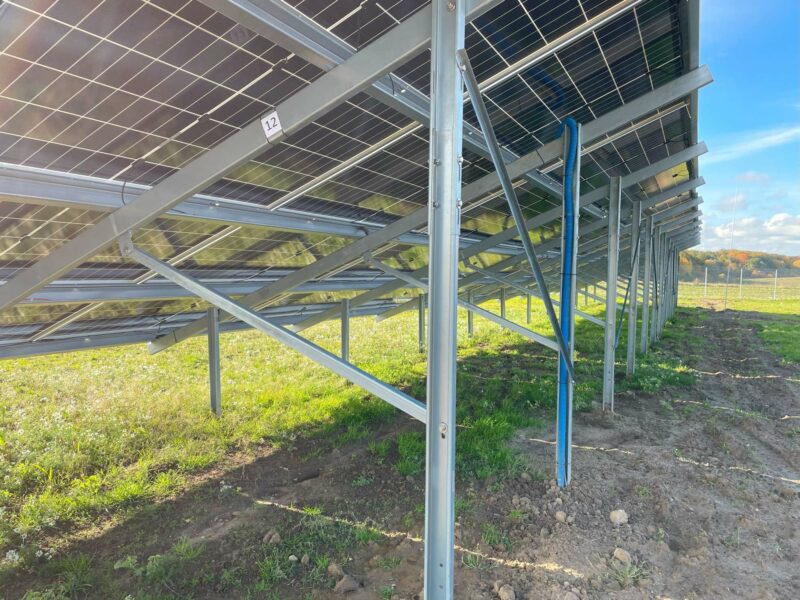
Solar construction for bifacial 700W HJT modules.
Why is important to have bifacial-friendly construction for solar panels especially HJT 700W in solar farms?
Bifacial solar panels are designed to generate electricity from both the front and back surfaces of the panel. This can lead to a significant increase in the overall power output of the panel. However, for bifacial panels to operate effectively, they need to be installed in a way that allows them to collect sunlight from both sides. This is where bifacial-friendly construction comes in.
Bifacial-friendly construction refers to the physical design of a solar farm that is optimized for bifacial panels. This includes factors such as:
Panel orientation: The panels should be oriented so that they are perpendicular to the sun’s rays for as much of the day as possible. This will maximize the amount of sunlight that is reflected up from the ground and collected by the back of the panel.
Ground reflectance: The ground under the panels should be a light-colored material, such as white or gravel. This will reflect more sunlight up to the back of the panel, further increasing power output.
Spacing between panels: The panels should not be spaced too close together, as this will shade the back of the panel and reduce its power output.
Frameless design: Bifacial panels are more efficient when they are installed using a frameless design, as this reduces the amount of shadowing on the back of the panel.
By following these guidelines, solar farm operators can maximize the power output of their bifacial panels and achieve a higher return on investment.
Here are some specific reasons why bifacial-friendly construction is important for solar farms:
Increased power output: Bifacial panels can generate up to 30% more power than monofacial panels. Bifacial-friendly construction can help to maximize this increase in power output.
Reduced land use: Bifacial panels can generate more power per square meter of land than monofacial panels. This means that solar farms can use less land to generate the same amount of power.
Improved energy efficiency: Bifacial-friendly construction can help to improve the overall energy efficiency of a solar farm. This can lead to a lower cost of electricity generation.
Overall, bifacial-friendly construction is an important consideration for solar farm operators who want to maximize power output, reduce land use, and improve the energy efficiency of their projects.
Why is it necessary to analyze solar panel manuals to create perfect construction for solar parks?
Analyzing solar panel manuals is particularly important for 700W panels due to their higher power output and unique characteristics. Here are some specific reasons why analyzing solar panel manuals is essential for 700W panels:
Understanding power output and current handling: 700W panels generate significantly more power compared to conventional 300W or 400W panels. This increased power output demands higher current handling capabilities from the mounting structure, inverters, and electrical components. Carefully analyzing the panel’s power output and current handling specifications ensures that the system can safely accommodate the higher power generation and prevent overloading or damage.
Mechanical support requirements: The increased weight and size of 700W panels necessitate a robust mounting structure capable of supporting the panel’s weight and wind loads. Solar panel manuals provide specific mounting requirements, including pole spacing, ballast weights, and guy wire configurations, to ensure the panels are securely fastened and can withstand the prevailing wind conditions.
Inverter sizing and stringing considerations: 700W panels may require larger inverters to efficiently convert the higher power output into usable AC electricity. Solar panel manuals provide inverter sizing guidelines based on the panel’s power output and maximum power point tracking (MPPT) range. Stringing arrangements also need careful consideration to ensure balanced power distribution and prevent excessive voltage drop or hotspot formation.
Electrical distribution and grounding: The higher currents associated with 700W panels necessitate a robust electrical distribution system with appropriately sized cables and connectors to minimize power losses and potential hazards. Solar panel manuals provide electrical specifications and grounding requirements to ensure safe and efficient power transmission from the panels to the inverter and grid.
Specialized installation techniques: 700W panels may require specialized installation techniques due to their larger size and weight. Solar panel manuals provide detailed installation instructions, including panel alignment, grounding procedures, and safety precautions, to ensure proper handling and secure mounting.
By carefully analyzing solar panel manuals for 700W panels, solar park designers, installers, and system operators can ensure that the system is designed, installed, and operated safely, efficiently, and reliably to maximize the benefits of this high-power technology.

